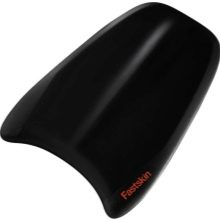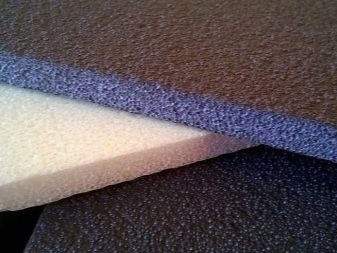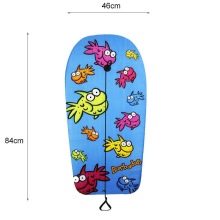Swimming board in the pool: models, rules for selection and operation

Many beginners and those who cannot swim yet prefer to use a special board for their workouts in the pool. Is it true that the use of an accessory by a beginner can cause a breach of technique? How to choose the “right” board, what are the options for using it?

Description
A swim board is a special device that helps the athlete stay on the water longer with a minimum of effort. Feature of the product is streamlined shape and moisture-proof material from which it is made. It is incorrect to believe that such equipment is necessary only for beginner swimmers and children, and experienced athletes often use it to work out certain elements, as well as perform various tricks in the pool. The equipment is actively used in aquafitness and children's swimming, as well as rehabilitation programs in the pool.
Swimming with a board (subject to the technique) helps beginners to master positioning and correct body balance in the water, to work out the technique of movement. If a person is afraid of water, then the use of this equipment allows psychologically to facilitate the learning process. A person sees a kind of support in the use of the board. For experienced swimmers, the product allows them to work out their technique and strengthen certain muscle groups. At the same time, it is possible to increase the productivity of training due to the use of this equipment - this is how energy is saved.
If you use a special board and train at a high-intensity pace, then such exercises will contribute to increased energy expenditure and, as a result, weight loss.


Models
There are such swimming boards depending on the purpose.
- Products for training legs. They are characterized by a variety of shapes and sizes, equipped with additional slots for gripping the board with your fingers.
- Buzz-boards (combined models). Such projectiles have a wavy shape due to the indentation in the middle of the board. It is necessary to capture the projectile with the hips. Suitable for training hands, practicing the skill to maintain balance, and is also used in aqua aerobics and rehabilitation aqua fitness.
- Noodles. Another versatile variety that is used both for teaching swimming and in water aerobics, and is also suitable for practicing jumping techniques. It is a long stick made of soft material, and therefore is suitable even for paddling.



These shells can be designed for adults and children. The former are larger. In addition, children's products tend to have more striking designs. If we talk about specific brands, then the following models have won the trust of buyers:
- Speedo fastskin (product is trapezoidal, suitable for teaching swimming and practicing technique);
- Joss (rectangular universal board for beginners with slots for gripping the top of the product);
- Swim keel (An unusual board from the Arena brand is a "mix" of a triangular board and a kolobashka, which ensures a wide scope of its application);
- TYR Streamline (EVA is a hydrodynamic board for training legs).



Materials (edit)
When choosing a material for a board, manufacturers are guided by the following criteria:
- lightness of the product;
- hygiene (mold and mildew should not appear on the surface of the board);
- hypoallergenic (skin allergic reactions should not occur when using the projectile);
- moisture resistance;
- wear resistance and resistance to chlorine and similar pool additives.


Among the popular materials that fully meet these requirements, the following are distinguished.
- EVA - This is the trade name that hides the material with the complex name "ethylene vinyl acetate". Despite the "chemical" name, it is EVA boards that are most popular today. They not only meet the above criteria, but also have a warm, tactile surface.
- Foamed polyethylene (abbreviated as PPE or EPE).
- Polyethylene, characterized by increased density (has the designation HDPE).
- Improved foam and plastic.


Shapes and sizes
The dimensions of swimming equipment may vary. The simplest and most versatile is the rectangular version with rounded corners. The more streamlined the edge of the board, the less stress is given by training with such a product. Accordingly, to increase the load, you should select a board with straighter sides. However, the corners on all boards, regardless of their shape, are rounded to reduce the risk of injury while swimming.
In addition to "rectangles", shells in the form of a wedge, trapezoid, and triangle are popular. In addition, there are products of complex shapes. The size of the board depends on who it is intended for. A standard projectile for adults usually has a length of 40 cm and a width of 25 cm. The height of a product varies between 2.5-3 cm. Boards are usually smaller and thicker, differing in the complexity of their shape.
The size of the children's inventory is slightly smaller. In length - from 34 cm, in width - from 21 cm. The height is usually the same as in products for adults. It is fair to say that the minimum thickness of the board is 1.5 cm (usually these are lightweight children's models), and the maximum can be up to 10 cm. The last indicator is the thickness of the places of thickening of the kolobashki boards.
The smaller the thickness, the lighter the projectile.



How to choose and use?
When choosing inventory, you should focus on your own goals. If you need to learn how to swim, a product of the right size and simple shape will do.There is no need to strive to facilitate the process of learning to swim by choosing a product that is too streamlined. It is better to choose a model that gives more resistance - this way you will learn to swim faster. This is a recommendation for adults and adolescents. For children, a more streamlined board shape is still better.
For more experienced athletes, it is better to purchase trapezoidal or wedge-shaped boards as they are more versatile. You can turn the projectile forward with one or the other end, thereby increasing or decreasing the load. If you turn the inventory at an acute angle forward, then this will increase the load.
For training arms and legs, losing weight, it is better to choose a kolobashka.

It is convenient if the product has special holes for gripping it with your hands. In this case, the board will not slip out of the hands, and the wrists will be less tired during exercise. The next parameter is the compliance of the material with GOST, which is confirmed by the availability of the relevant quality certificates from the seller. If the board is imported, then its quality is confirmed by an international quality certificate.
It is desirable that the material of the model be heat treated. This provides increased strength of the product, helps prevent cracking and crumbling during operation. Also, heat treatment of the material makes it possible to increase its water resistance. Using different types of board grip, you can change the load on the muscles. So, the close grip (the inventory is held by the front edge, arms outstretched and the forearms folded on the board) allows you to train your legs.
If you hold the board with a long grip (by the rear edge located closer to the swimmer), then all muscle groups receive the load.



Experts recommend learning to hold the projectile with a long grip. This allows you to properly balance on the water. At the same time, the arms and spine should be extended, straight, and the face lowered. In this position, the athlete should breathe out into the water, and inhale while turning the head to the right or left. This turn is done with a slight turn of the body. It is a big mistake to try to raise your head above the water, which creates unnecessary deflection in the spine and increases the load on it. To get started, you just need to learn how to stay on the water using a board. The next step is exercises for practicing the technique of moving the legs. Swimming pace is average. If the task is to strengthen the muscles of the legs, then you need to swim at a fast pace.
The products are used by both swimmers and other athletes to train certain muscle groups. Holding the projectile with your hands, you can train the leg muscles in a comfortable technique and pace. To train the upper body, including practicing the stroke, you can use special equipment, the so-called kolobashka board. The same board model is used to develop the skill to maintain balance. The diving board also allows you to improve the ability to hold your breath. To do this, they lie on her stomach, placing most of the body on the inventory. At the same time, the legs make movements in the chosen technique, and the athlete periodically lowers his face into the water, holding his breath.

You can find out how to make a do-it-yourself swim board below.








